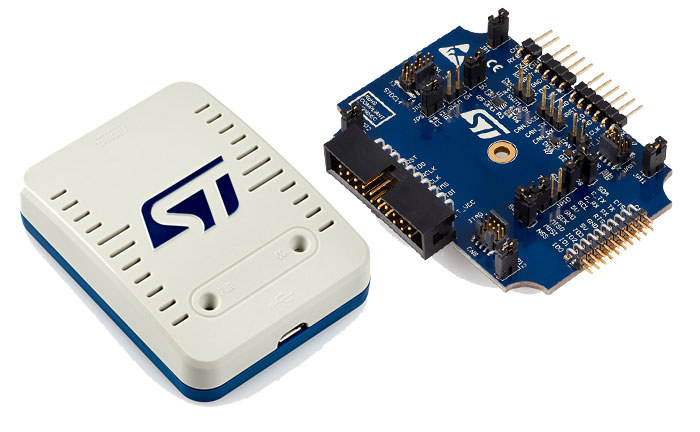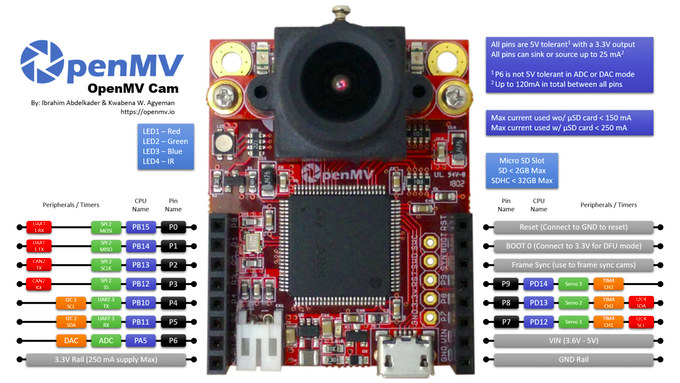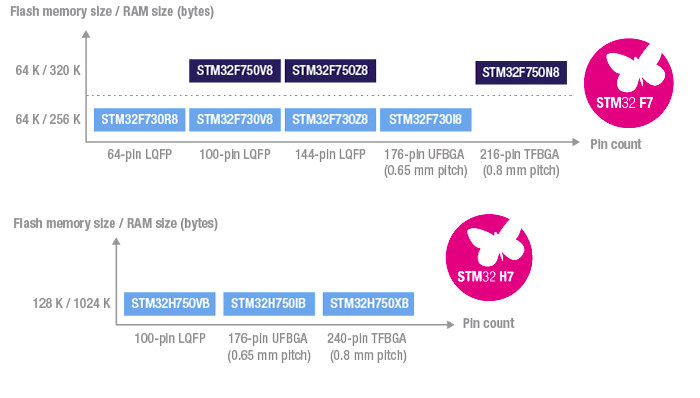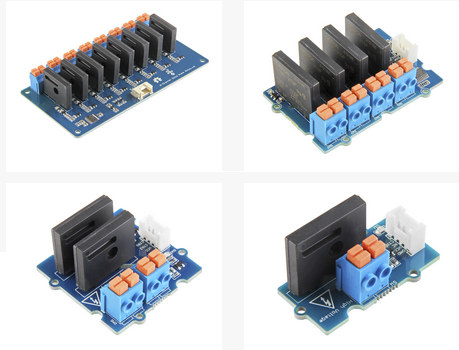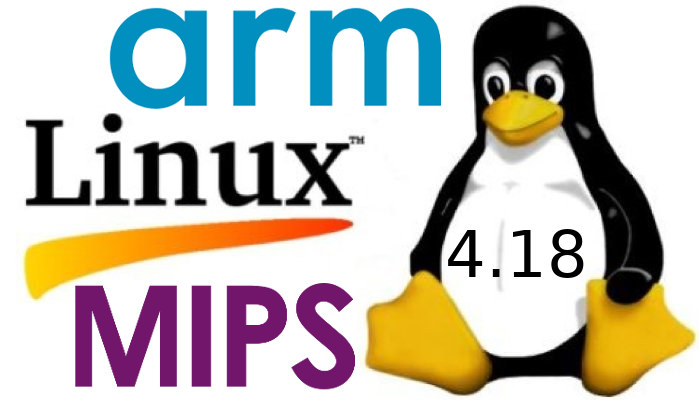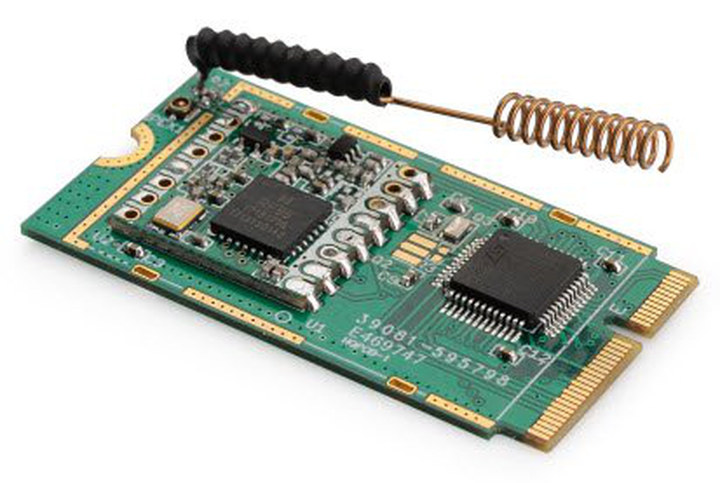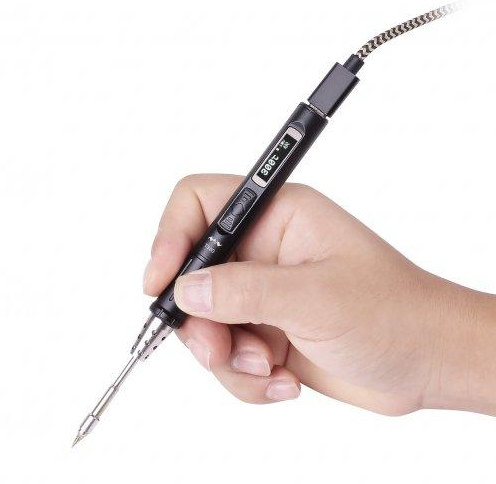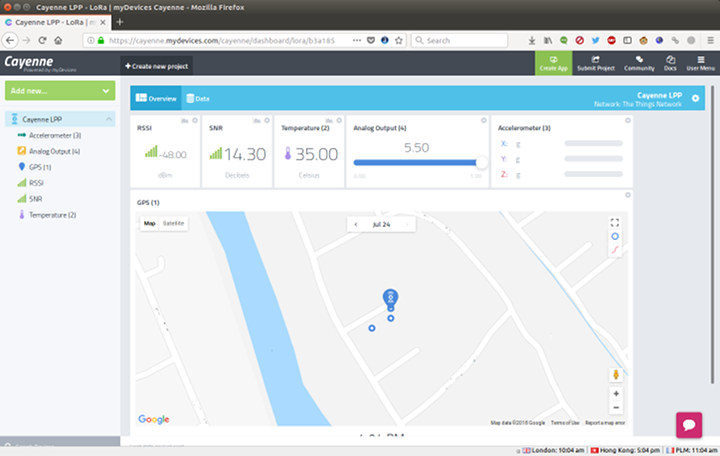STLink is the in-circuit debugger and programmer for STMicro STM32 and STM8 micro-control working with SWIM and JTAG/SWD interfaces. ST Microelectronics has now introduced STLink-V3 which also provides a Virtual COM port interface allowing the host PC to communicate with the target microcontroller through one UART, as well as bridge interfaces (SPI, I2C, CAN, GPIOs) which can be used for programming of the target through the bootloader for example. Key features of STLink V3 debugger: Stand-alone probe with modular extensions Self-powered through a USB connector (Micro-B) USB 2.0 high-speed compatible interface Direct firmware update support (DFU) JTAG / serial wire debugging (SWD) specific features:3 V to 3.6 V application voltage support and 5 V tolerant inputs Flat cables STDC14 to MIPI10 / STDC14 / MIPI20 (connectors with 1.27 mm pitch) JTAG communication support SWD and serial wire viewer (SWV) communication support SWIM specific features (only available with adapter board MB1440):1.65 […]
OpenMV Cam H7 MicroPython Machine Vision Camera Launched on Kickstarter
OpenMV team has launched an upgrade to their popular OpenMV CAM M7 machine vision camera, with OpenMV CAM H7 replacing the STMicro STM32F7 micro-controller by a more powerful STM32H7 MCU clocked at up to 400 MHz. Beside having twice the processing power, the new camera board also features removable camera modules for thermal vision and global shutter support. OpenMV CAM H7 camera board specifications: MCU – STMicro STM32H743VI Arm Cortex M7 microcontroller @ up to 400 MHz with 1MB RAM, 2MB flash. External Storage – micro SD card socket supporting up to 100 Mbps read/write to record videos and store machine vision assets. Camera modules Omnivision OV7725 image sensor (default) capable of taking 640×480 8-bit Grayscale / 16-bit RGB565 images at 60 FPS when the resolution is above 320×240 and 120 FPS when it is below; 2.8mm lens on a standard M12 lens mount Optional Global Shutter camera module to capture […]
STMicro STM32F7x0 & H7x0 Value Line Microcontrollers Deliver Cortex-M7 Performance at Lower Cost
STMicro introduces their first Arm Cortex-M7 microcontrollers in 2014 with STM32F7 series clocked up to 200 MHz. The next year, Atmel – now Microchip – announced SAM S70 & SAM E70 Cortex-M7 MCU families clocked at up to 300 MHz, STMicro up the ante to 400 MHz with their STM32H7 family in 2016, and more recently NXP launched their i.MX RT series “crossover” processor with the Cortex-M7 reaching up to 600 MHz. AFAIK, nobody has tried to push the clock speeds higher, but STMicroelectronics most recently unveiled STM32F7x0 & H7x0 Value Line microcontrollers with the same performance level as their earlier STM32F7 and STM32H7 MCUs, but with a lower price by reducing the amount of internal flash. Three Cortex-M7 value line families have been introduced: STM32F730 entry-level MCU @ 216MHz with 64KB flash, 8KB data / instructions cache, 256KB RAM and 16KB+64KB TCM (Tightly Coupled Memory). The microcontroller also includes […]
Seeed Studio Introduces 1 to 8 Channels Grove I2C Solid State Relay Modules
I’ve been playing with products or boards with AC relays for a while, but I never really cared to check about different types of relay. So far, all platforms I tested came with largish blue or black boxes which are SPDT electro-mechanical relays. But as I browsed through Seeed Studio, I found some weirdly-shaped relay modules, much thinner than usual, and fairly more expensive. The main difference is that those are solid state relays, and the boards also include a grove connector that allows microcontrollers or other boards to control the relay over a simple I2C connection. The modules are available in 1-channel, 2-channel, 4-channel, and 8-channel versions with the following specifications: MCU – STMicro STM32F030F4P6 Arm Cortex-M0 micro-controller Relay – Omron G3MC202P module Input Voltage – 4~6V (Rated Input Voltage: 5V) Load Voltage Range – 75 to 264 VAC 50/60 Hz Rated Load Voltage – 100 to 240 VAC 50/60 […]
Linux 4.18 Release – Main Changes, Arm and MIPS Architecture
Linus Torvalds has just announced the release of Linux 4.18: One week late(r) and here we are – 4.18 is out there. It was a very calm week, and arguably I could just have released on schedule last week, but we did have some minor updates. Mostly networking, but some vfs race fixes (mentioned in the rc8 announment as “pending”) and a couple of driver fixes (scsi, networking, i2c). Some other minor random things (arm crypto fix, parisc memory ordering fix). Shortlog appended for the (few) details. Some of these I was almost ready to just delay to until the next merge window, but they were marked for stable anyway, so it would just have caused more backporting. The vfs fixes are for old races that are really hard to hit (which is obviously why they are old and weren’t noticed earlier). Some of them _have_ been seen in real […]
Dragino LoRaST M.2 LoRa Card Convert Compatible Platforms into LoRa Nodes
Modern motherboards or single board computers often expose mPCIe or M.2 / NGFF socket, and we’ve seen it was possible to easily add a LoRa radio using RAK833 mPCIe LoRaWAN gateway card to hardware with an mPCIe (USB/SPI) socket. You can now do something similar with Dragino LoRaST M.2 LoRa card by inserting into a spare M.2 / NGFF socket. There’s an important distinction however, as while RAK833 is designed for LoRa gateways, LoRaST is based on SX1276/SX1278 for LoRa end nodes. Dragino LoRaST M.2 LoRa card specifications: MCU – STMicro STM32L072CZT6 Arm Cortex M0+ MCU @ 32 MHz with 192 KB flash, 20 KB of RAM, 6 KB data EEPROM LoRa Connectivity Semtech SX1276/78 LoRa Wireless Modem Available Bands – 433/868/915/920 Mhz Built-in antenna or optional external antenna via I-PEX connector Host interface – Standard M.2 (NGFF) interface Supply Voltage – 1.8V ~ 3.6V Dimensions – 22 x 42 […]
TS80 USB type-C Soldering Iron Up for Sale for $79.99
TS100 digital programmable soldering iron has been popular in recent years due to its compact size, open source STM32 firmware, fast heating, and it does the job. Another advantage is that the soldering can be powered by a standard 19V laptop power supply. As noted in a post about a separate soldering pen board with audio jack, the company behind TS100 has been working on a new model called TS80 powered via USB type C port, lighter & more compact, and supporting soldering tips that connect through a typical 3.5mm audio jack. The good news is that TS80 is now available for $89.99 on Sainsmart under the ToolPAC brand. Use TS80 coupon for $10 discount. [Update: TS80 is now sold on Banggood for $72.99 shipped] TS80 SUB type-C soldering iron specifications: MCU – STMicro STM32F103T8 Arm Cortex-M3 MCU @ 72 MHz with 20KB SRAM, 64KB or 128KB flash Temperature Range […]
AS923 LoRa GPS Tracking with MatchX MatchBox Gateway and RAK811 LoRa GPS Tracker Board
Earlier this month, I installed Match MatchBox LoRa outdoor gateway close to the roof, and showed how easy it was easies to setup with MatchX Cloud. Basically, you just register to the cloud, enter the serial number, and the gateway is automatically based on your location. I’m in South East Asia, so the gateway was configured with AS923. I’ve now had time to play with the gateway using Rak Wireless RAK811 LoRa tracker board, and eventually managed to get the tracker location to show up on a map. It was my first experience with LoRaWAN, and I had to learn a lot, and overcome many issues from outdated software development tools, different data formats, and some interoperability issues between all components involved. I’ll document all that in this review, and hopefully it will help others. RAK811 LoRa GPS Tracker Unboxing Before going into LoRa configuration, I’ll show what I got […]


